Celebrating Black History and Culture Through National Parks
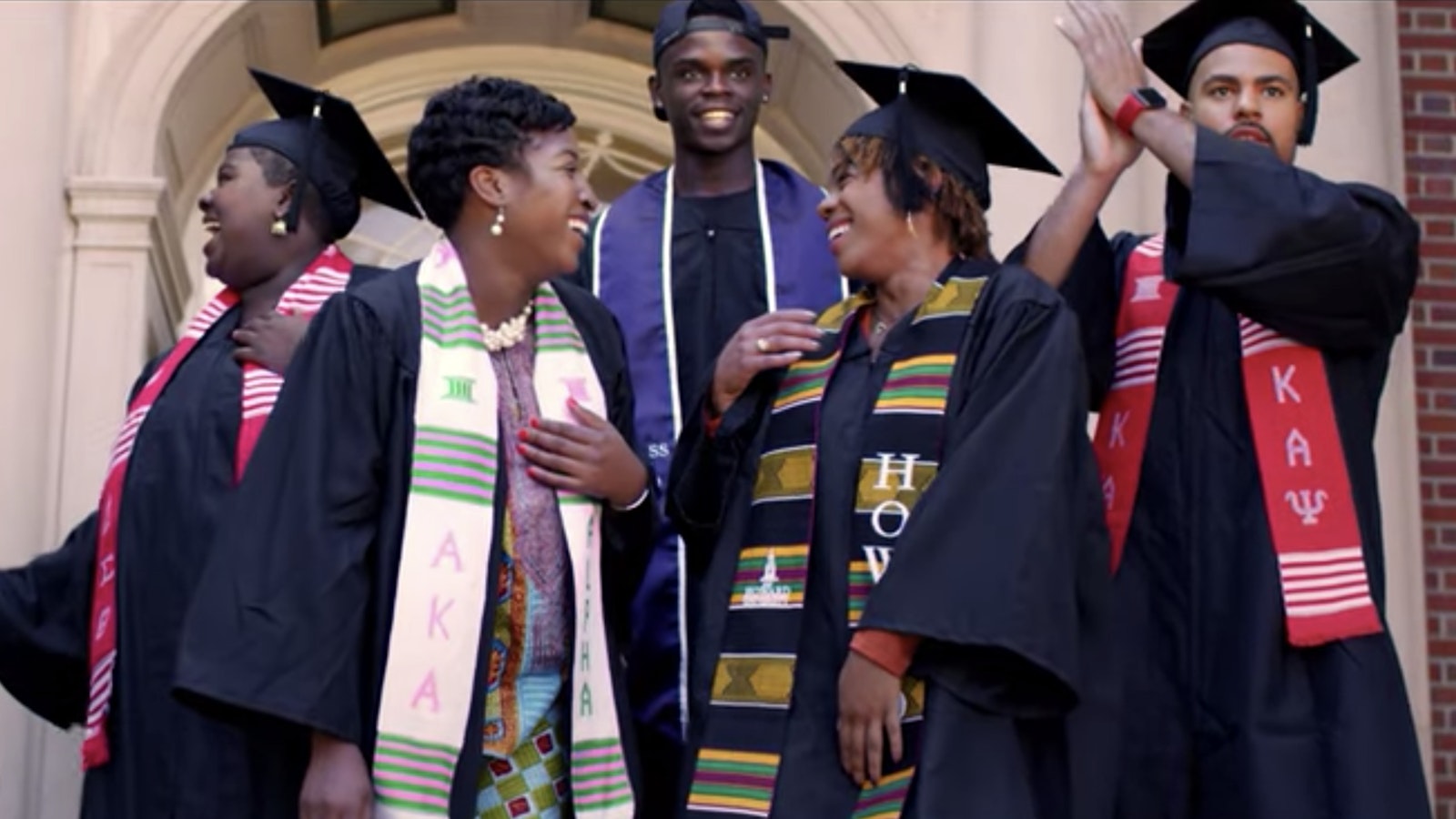
.
.
What happens when stories are told by the people closest to them?
Authenticity. Beauty. Connection.
The National Park Service's film commemorating 400 years of African American history, "Twenty & Odd," is a model for how powerful this type of storytelling can be.
Reclaiming the terms used to describe a group of Africans that were stolen from their homeland and brought to the United States, the film’s creative team uses the words “Twenty & Odd” to now celebrate all that Black and African American communities represent and contribute to our collective heritage, through the lens of national parks.
While the idea for this film was sparked from an incredibly meaningful moment that Indian American Director and Executive Producer Mathew John experienced in a park in 2011, it wasn’t until powerful friendships forged with fellow National Park Service colleagues that the vision truly came to life.
These fantastic National Park Service employees, fellows, and interns were not filmmakers nor producers when starting this project with Mathew. But rather, they are a team of six African American women that brought their shared experiences and individual stories to a table created by extraordinary women that came before them, with one significant figure being Dr. Maya Angelou, whose voice narrates the film with her poem, “Still I Rise.”
We are thankful we had the chance to speak with the creators of "Twenty & Odd" and are excited to share their reflections and experiences with you.
We hope you’ll enjoy this glimpse into our conversation.
What is the inspiration for the "Twenty & Odd" film?
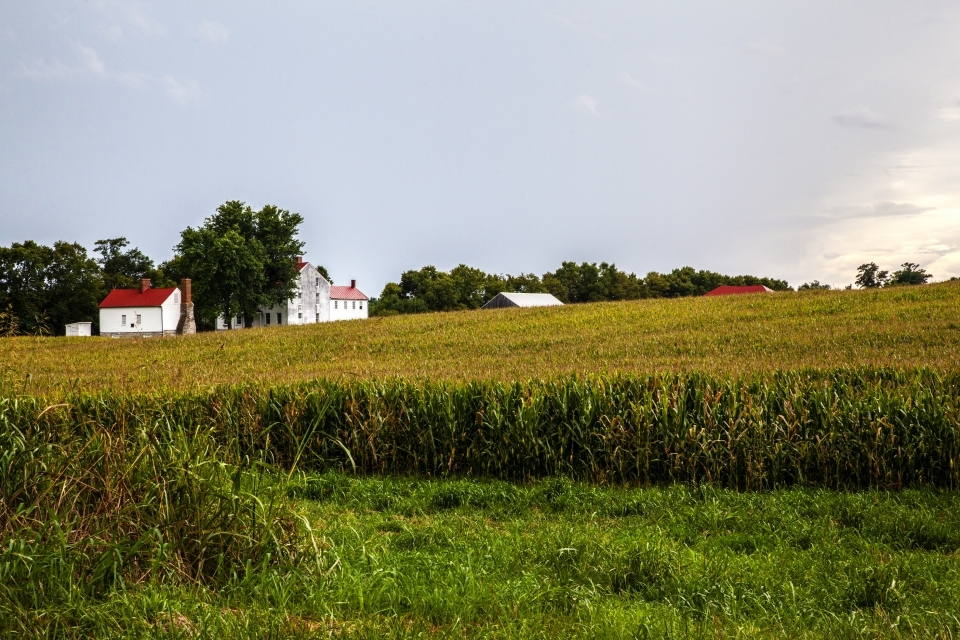
Mathew John, director and executive producer: In 2011, I was an intern for the National Capital Region and was given an assignment to film the excavation of the L'Hermitage slave village at Monocacy National Battlefield in Frederick, Maryland. My focus was to capture the HBCU (Historically Black Colleges and Universities) interns performing the archaeological dig under the leadership of project manager, Joy Beasley. As I filmed the group sifting through the dirt, I remember feeling such profound sadness. Sadness because the memories of 90 or more enslaved individuals had been relegated to just buried remnants. The history of the site and that moment weighed on me, but as the voice of my favorite artist blared through my headphones and I tuned into the lives of the archaeological team, the inspiration appeared. "Twenty & Odd" was inspired by African American people and it is simply meant to be, and will always be, about the beauty of the African American experience.
Christian Bacon, producer: Our inspiration was the lack of appropriate acknowledgment surrounding the horrific experiences of our ancestors coupled with the lack of appropriate language around the ever-present implications of said trauma.
Why is this film important to you?
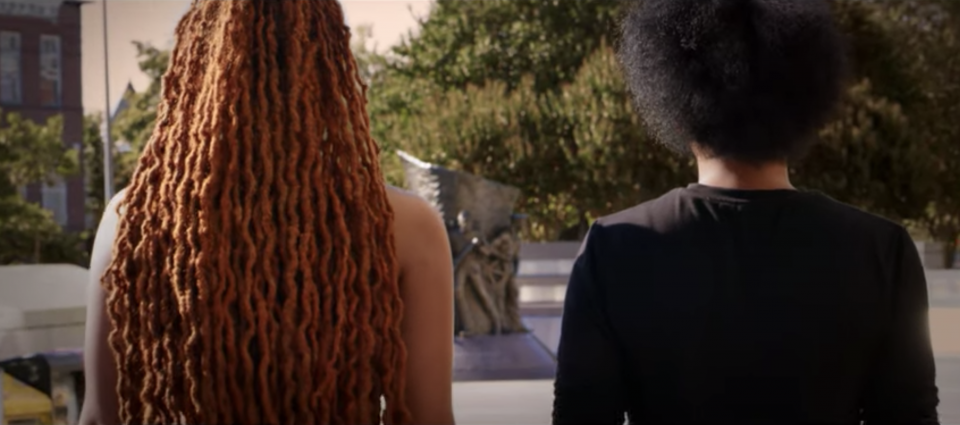
Christian Bacon: This film gave me an opportunity to highlight my creativity while paying respects and homage to the people that came before me. I have always been extremely passionate about Black history and I was super excited to be a part of a team of individuals that were as passionate about creating art as me. I believe more often than not, Black history is sensationalized and the voices of Black people are muted for white audiences, but this film is different and expresses pain, joy and triumph in a relevant way.
Ridasian Moore, producer: This film is an opportunity to highlight and represent African Americans in a way that prior to now they have not been. This film tells the story of African Americans in parks in an authentic way, one that resonates with the culture and across generations. We finally have a film that celebrates who we are versus highlighting the hardships of our journey in America. We invite African Americans and all Americans to come learn about their history, experience their legacy, and share their stories with NPS and the world.
Subria Spencer, producer: "Twenty & Odd" is more than just a film to me. It is the start of hopefully a new wave of storytelling in the National Park Service. A wave that invites the storytellers, those with the first-hand or generational experiences, to share their story. As Mathew has said before, the National Park Service is a platform or stage that helps to elevate the voices of communities. Through "Twenty & Odd", we amplify the beauty of Black people and Black history. We shed light on the fact that our history is American history and there must be no distinction between the two. "Twenty & Odd" is essentially the foundation and hopefully a framework to be used by under-highlighted communities in the future. That is the ultimate goal.
What is one of the most meaningful moments you experienced during the production of the film?
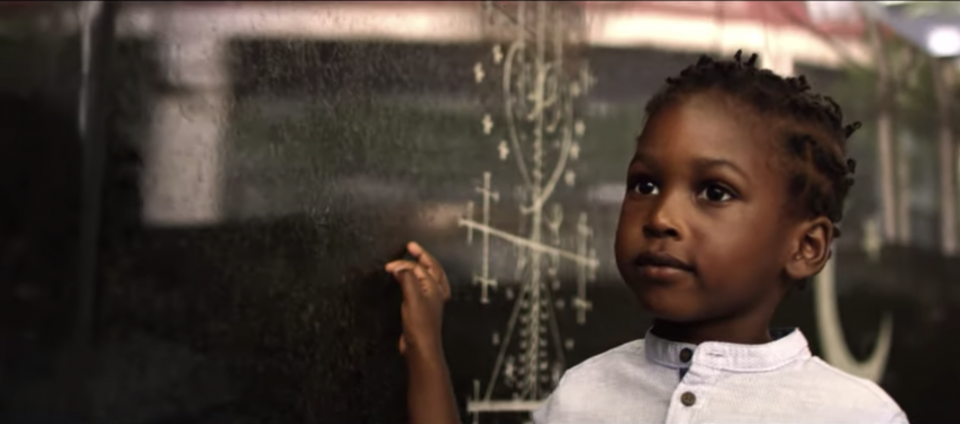
Christian Bacon: The most meaningful moment for me took place at Fort Monroe. Our ability to really connect with each other in such a vulnerable and emotional place, physically and emotionally, was overwhelming but so necessary.
Kayla Hall, producer: I don’t think that I can pinpoint one specific moment, but having the opportunity to help design the sets and develop the wardrobe for the cast was truly special. Everything in "Twenty & Odd" was intentional. Every item you see in the frame, the placement of people, the facial expressions -- it was all planned out. Our focus was to ensure that the true beauty of Black people would be visibly seen in every shot, so I kept this in mind when helping to think about what the shots should look like. Acquiring all of the props we needed proved to be a bit of a challenge, but our team made it work!
Ridasian Moore: The most meaningful moments for me were having my toddler, Iam, at African Burial Ground National Monument in New York. It was great to be doing something I am passionate about and involving him in a learning experience that shows him the history of African Americans building the foundation of our country. Also, this was a moment in which we realized how heavy the responsibility of telling our ancestors' story really is, and how important it is to continue to capture and share their stories… our stories.
And finally, our conversations and meetings with our stakeholders and other NPS employees, in the Washington, D.C. office and in the field were also extremely special. The guidance and support we received from leaders like George McDonald, Sara Newman, Sonya Coakley, Dr. Turkiya Lowe, Reginald Chapple, Enimini Ekong, Steve Hargrave, Judy Forte, Maggie Tyler, and others was crucial. Their belief in our vision, and their support and advocacy of our efforts is really what got "Twenty & Odd" across the finish line. That type of leadership is necessary to advocate for diversity, create opportunities, and ensure burgeoning talent have a “seat at the table.” After our trip to the African Burial Ground, we had a very candid conversation with our stakeholders about self-care and mental health. I knew then that not only did they support the film, they also supported the team. As an employee or intern, knowing that you are valued is a beacon of light to keep pushing forward.
Subria Spencer: The most memorable moment for me was when I called my grandmother in California to hear about her reaction to the film. Thankfully, Ridasian recorded this conversation because it is one that will stick with me forever.
Through overflowing tears, my grandmother shared that she was in awe and so blown away by the piece we had created. She explained that many of the highlighted experiences and dark moments in history did not feel that long ago to her and she recalls watching the horrific events of Bloody Sunday on the news. She also recounted her sentiments when she visited the Edmund Pettus bridge and the chills she felt seeing it featured in the film. As we ended the conversation, she expressed an overwhelming sense of joy and hope for our generation as we hold on to our history, but continue to press forward and show the beauty and brilliance of our culture.
How did you select the national parks and locations featured in the film?
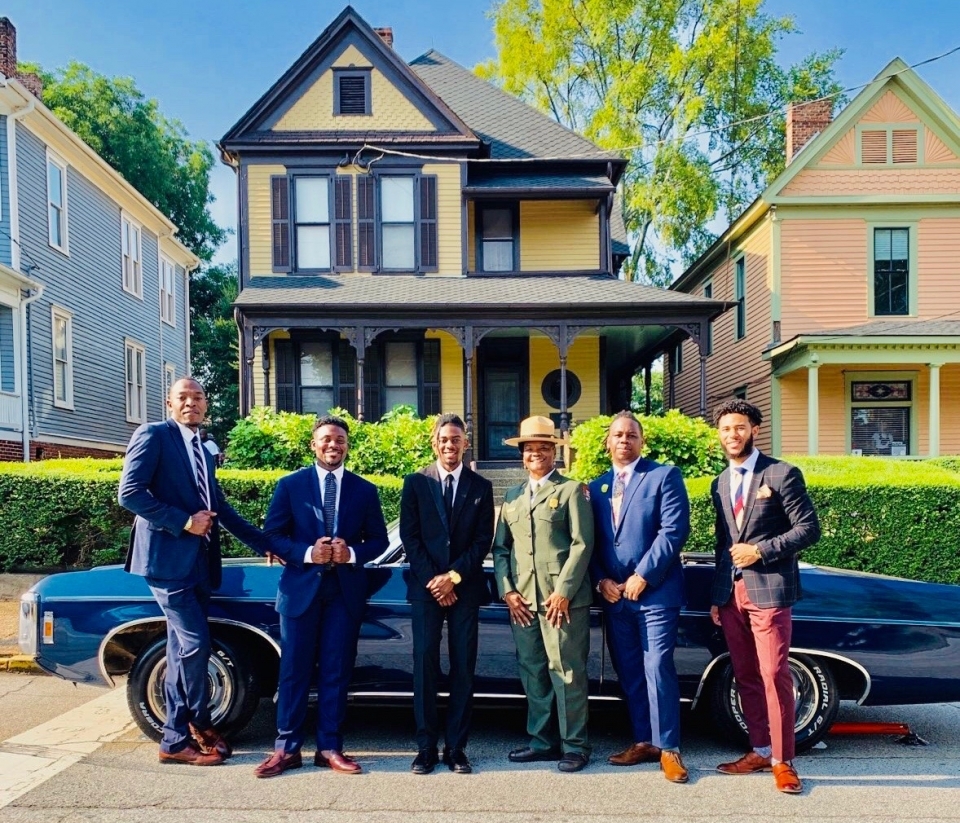
Christian Bacon: The national parks each feature significant elements of Black history. The southeastern portion of the U.S. holds so much joy and so much pain. We wanted to film in places that were culturally significant. While national parks are all over the country, we wanted to focus on the few that currently tell vibrant stories that directly relate to the experiences of our forefathers and foremothers.
Subria Spencer: Let me start by saying that this entire project was built on strategic action. In fact, “Intentional, Strategic and Black” is a mantra that we developed because we understood that we had limited resources, a short timeframe to film, and a number of sites to choose from.
Thankfully, we garnered the support from National Park Service Chief Historian Dr. Turkiya Lowe. She provided a thorough list of sites that held African American significance for us to research and choose from. Through great deliberation, we determined the most cost effective and feasible travel schedule that would allow us to highlight the most sites.
While many of the sites have been highlighted throughout history, many people don't know the connection between the sites and the National Park Service. In fact, we found that much of the public and our volunteer cast members were unaware of that very connection. For example, our first shoot began at Martin Luther King, Jr. National Historical Park and featured five men in suits. A few of them shared that they had grown up in Atlanta and even lived in an adjacent neighborhood, but never knew that Dr. King's birth home was a National Park Service site. In that moment, I think we realized the true power of what "Twenty & Odd" could do and would do for ordinary people.
Why was it important to show people in parks?
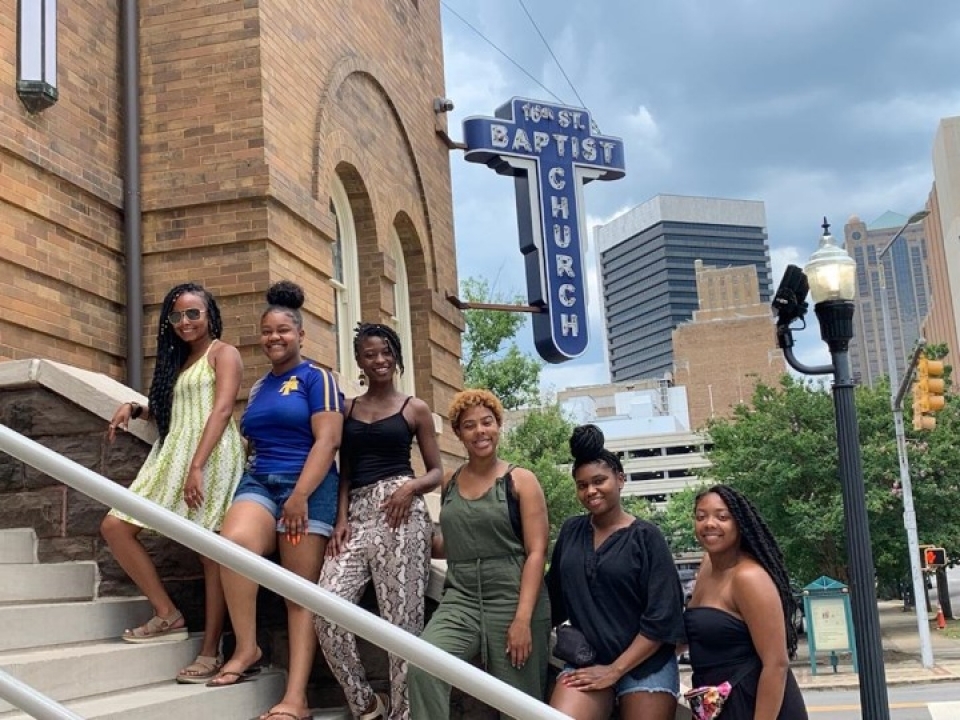
Christian Bacon: Representation matters! Showing people that they belong in these spaces is important. Allowing individuals to see a representation of themselves makes them more likely to engage in these parks. Seeing billboards and videos of people that don’t share your experience can make the idea daunting and mentally inaccessible.
Ridasian Moore: This was a crucial element of the film because this was our opportunity to really highlight the parks and the rich history they preserve along with the adventures that await you when you visit. Unfortunately, African Americans are not represented in spaces like national parks due to an unrealistic belief that we are not “into nature” or do not have an interest in learning about U.S. history -- which is false. The key here for us was to recreate moments that African Americans cherish in a universally relatable way in parks and sites that are accessible and offer an immersive learning and recreational experiences.
Subria Spencer: I invite you to take a moment, close your eyes and think of a time when you have had to visualize yourself in a new space. This could be a workplace, a school, or even a restaurant in your own community. Are you able to immediately form a connection in your mind to someone or something that brings you comfort and allows you to imagine yourself participating in activities or simply existing in a new environment?
Seeing a lack of Black people and people of color in national parks does not help these communities visualize themselves in these spaces. The reality is that there is a complicated and troubled past as it relates to nature and the outdoors for many marginalized communities. Our society, at certain points in history, have even encouraged active exclusion of individuals in national park spaces.
Fortunately, we have a wealth of diverse communities with unique experiences that can be celebrated through parks now. We have an opportunity to find the gaps and take action. We must understand that showing people in parks and becoming intentional about diverse representation not only helps to quell unwarranted societal stereotypes, but it also allows those very communities to confront their own history and find ways to heal.
Representation inspires imagination, creativity, and a sense of belonging. Individuals become empowered and motivated to act when they see themselves in the process and ultimately, we want everyone to be able to establish lifelong connections to parks. It honestly brings me joy to imagine black and brown faces watching "Twenty & Odd" and feeling a sense of pride in seeing people that look like them take up space in a real way.
What do you hope people will do after seeing this film?
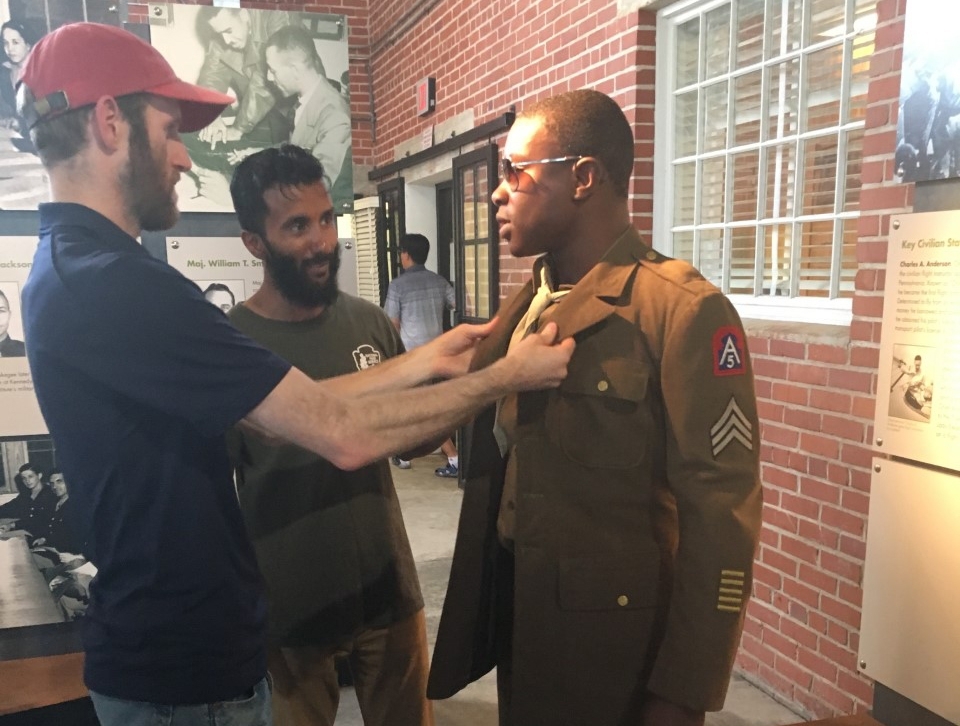
Kayla Diallo, producer: My hope is that Black people will view this film and be inspired to explore the parks and other historical sites around them. The African American experience is essential to the story of America, but if our stories aren’t told in an accurate way, they begin to fade into the background. The NPS prides itself on being America’s storyteller, yet many people do not see themselves represented in these spaces. I hope this film motivates the NPS to continue to cultivate opportunities where young creatives can explore the history around them and create projects centered around communities of color.
Ridasian Moore: I hope that this film inspires another generation of interns, thinkers, and innovators to continue to push the wheel forward in how we engage with national parks both in a visitor capacity as well as within the NPS workforce. I hope more young African Americans apply for positions within the NPS and implement actionable change via programs, policies, videos, etc. It is so important that we have diversity when it comes to making decisions for the larger NPS audience. I believe it will ultimately lead to racial equity within the workforce, communications strategies, and programs, in addition to meeting the NPS goal of engaging with new audiences.
Subria Spencer: It is important to note that our creative team was not made up of filmmakers and we did not have extensive knowledge about the development process. However, we possessed something that was truly powerful and essential to the project. We brought our shared experiences and individual stories to the table. I hope that "Twenty & Odd" reminds people that they too have stories and experiences worth sharing. I hope that people feel motivated to get out and find a park that connects to them.
Why is the companion guide an important element of this film?

Rhea Warren, producer: On its own, "Twenty & Odd" is powerful. The audio and visuals tie together a powerful story of African American beauty and the legacy tied to the national parks. The companion guide allows viewers to delve deeper into why park sites were chosen, what certain lines of Dr. Maya Angelou's poem represent to us, what historical moments were highlighted, and how all these elements tie together. After watching the video, then reading the guide, and then watching the video again, viewers can fully understand the entirety of the depths of "Twenty & Odd".
Ridasian Moore: We knew that a four minute and twenty-five second film could not express everything that we wished to share. The companion guide was one of the critical deliverables that we needed to create to offer viewers greater insight into our creative process. Rhea Warren was instrumental in the development of this key piece which is essential for understanding the symbolism, cultural traditions, expressions, and the actor selection for each scene. This guide expounds upon themes weaved into the story such as family, fatherhood, sexuality, outdoor recreation, and more.
What do you personally love about national parks?
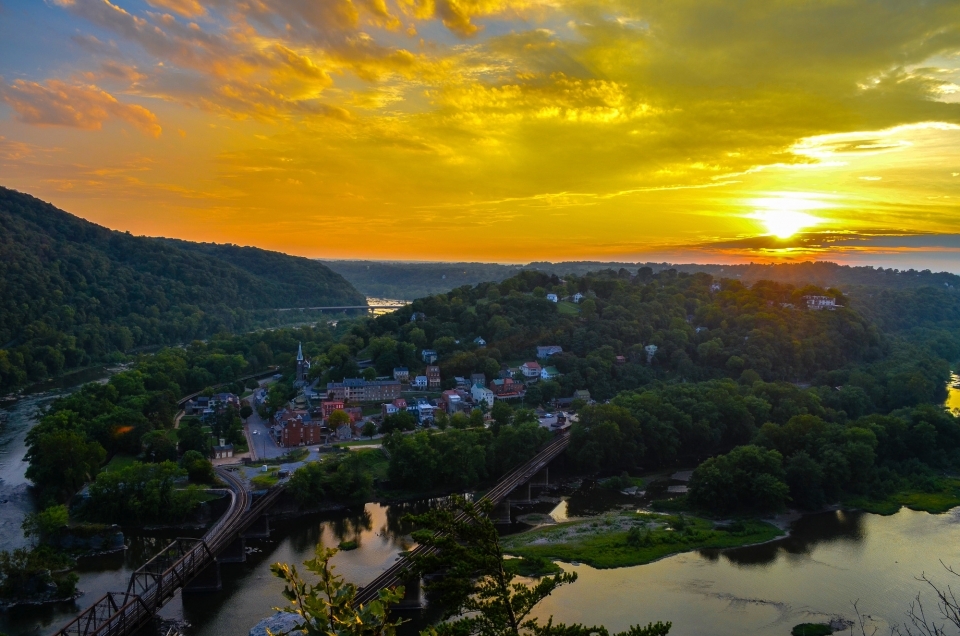
Ridasian Moore: I love the serendipitous adventures and knowledge that you gain in parks. We have all had our history and civics classes, and heard stories of great leaders; however, being in the places where history has happened brings a special element of understanding and personalizes the stories we are taught.
Subria Spencer: Let me be honest. I knew very little about national parks before beginning my career with the National Park Service.
I had heard of the Grand Canyon and Yellowstone, but I never realized their connection to the larger system or that there were other more accessible parks closer to my community. I would say that this is a reality for many individuals. However, since working at the National Park Service, I have come to realize that national parks are truly special gems that are waiting to be explored. Not only do they offer the rich history of America, but they also serve as a health resource for all.
When you visit a national park, you can tap into every aspect of health from emotional, physical, mental, spiritual, and even environmental. I love that I have the opportunity as a communications specialist within the National Park Service Office of Public Health to engage diverse communities in parks and help show how parks can positively impact their health too.
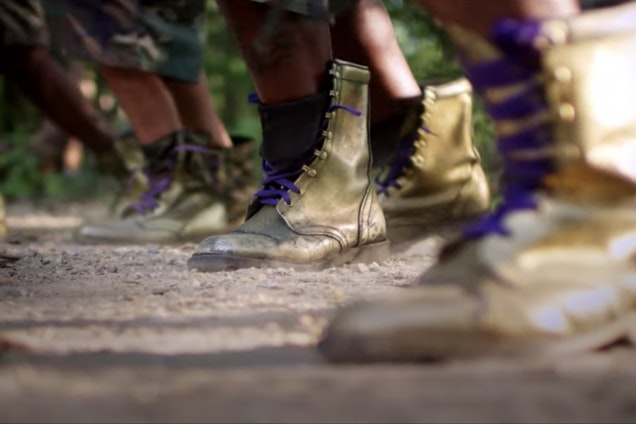
As is evidenced in our conversation with the creative team, this film was a labor of love and inspires meaningful connections between people and parks.
The film celebrates Black and African American communities, provides us opportunities to see life from multiple perspectives, inspires us to listen more, and compels us to explore the stories and National Park Service sites that are highlighted.
We invite you to learn more about the National Park Foundation’s African American Experience Fund and support efforts to preserve and share Black history and culture in our national parks.
Creative Team
Director and Executive Producer
Mathew John is an award-winning videographer who artfully mixes music, sights, and sounds to convey the beauty, history, and majesty of our country's 400+ national parks. He serves as policy advisor, mentor, and trainer for 20,000 employees at sites throughout the country and enjoys helping others produce quality content.
Producers
Christian Bacon is a 2019 graduate of Howard University where she obtained a Bachelor of Science in Community Health Education. As a wellness educator, Christian is committed to uplifting and inspiring under-served communities, specifically Black and Brown women in the Washington, D.C., area. She spent three years with the National Park Service Office of Public Health as a Greening Youth Foundation Fellow creating programs that exposed youth in the District of Columbia to national parks as an outlet for meditation and healing. Christian has since become a Community Health Educator for the Prince George’s County Health Department.
Kayla Diallo is a graduating senior at North Carolina Agricultural and Technical State University. She began her work with the National Park Service at the headquarters in Washington, D.C., in the summer of 2018. She worked with the Office of Communications as a Historically Black Colleges and Universities Internship Program (HBCUI) intern through the Greening Youth Foundation. She was asked to return as an intern the following summer and was able to explore many different stories and experiences all over the nation.
Kayla B. Hall is a 2018 graduate of Oakwood University where she obtained a Bachelor of Science in Nutrition and Dietetics. She joined the National Park Service Office of Public Health as a Greening Youth Foundation fellow in October 2018 where she accumulated experience in diversity and inclusion, health promotion, and program development. Kayla has recently transitioned from her role at the National Park Service to prioritize her career as a Registered Dietitian.
Ridasian Moore is a 2014 graduate of Howard University where she obtained a Bachelor of Art in Communications and a minor in Sociology. From 2018 to 2020, Ridasian served as a Youth Conservation Corps intern for the National Park Service Youth Programs Division as the Digital Communications Specialist. As a Creative Brand Strategist, Ridasian possesses a diverse background in communication, multimedia journalism, and creative marketing. She is currently planning to undertake a fellowship in April 2020 as a Communications Associate.
Subria Spencer is a 2016 graduate of The University of Alabama at Birmingham where she obtained a Bachelor of Science in Public Health and a minor in Spanish. Subria served as a Public Health Associate for the CDC Public Health Associate Program assigned to the National Park Service Office of Public Health (OPH) from 2018-2019. Her role included collaboration with branch chiefs on projects focused on infectious disease epidemiology and surveillance, environmental health and health promotion. Subria accepted a permanent position with the National Park Service Office of Public Health as Deputy Liaison and Communication Specialist in October 2019.
Rhea C. Warren is a 2015 graduate of Howard University where she obtained a Bachelor of Art in Public Relations. She earned a Master of Science in Conflict Analysis and Resolution from George Mason University in 2018. During her time at the National Park Service, Rhea served as a Greening Youth Foundation fellow where she worked on multiple digital communication platforms and public health community outreach projects. Rhea was the lead writer for the "Twenty & Odd" companion guide and is currently open to new opportunities in the field of communications.